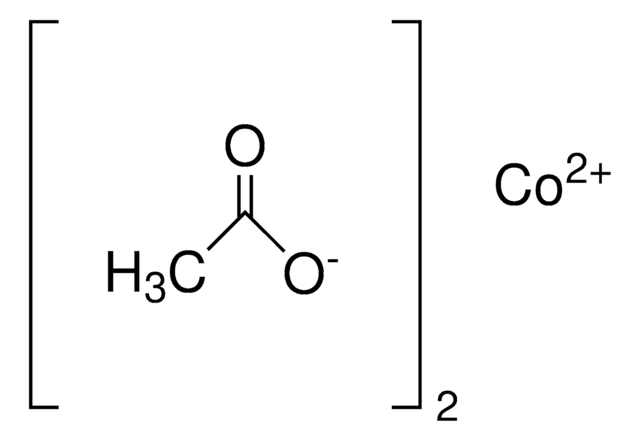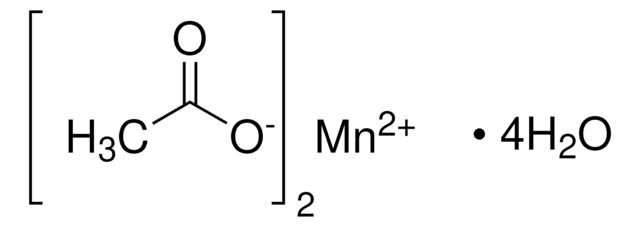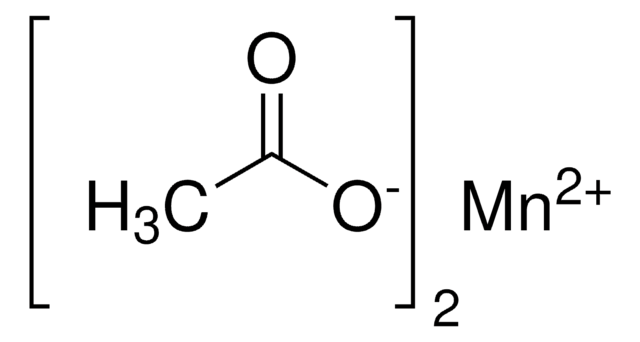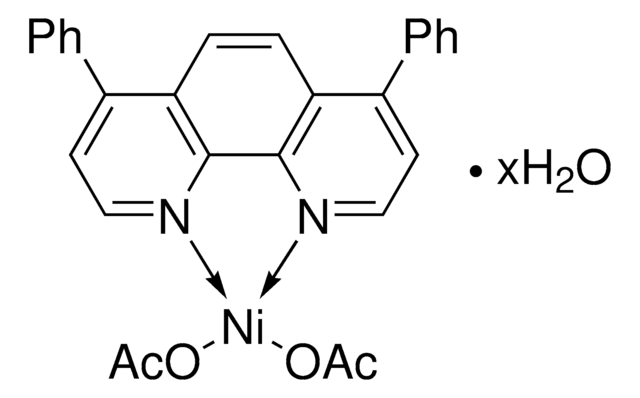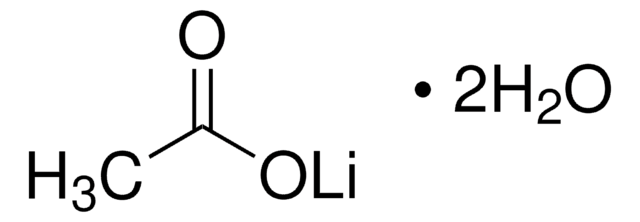244066
Nickel(II) acetate tetrahydrate
98%
Sinónimos:
Acetic acid nickel(II) salt
About This Item
Productos recomendados
Nivel de calidad
Análisis
98%
formulario
powder
idoneidad de la reacción
core: nickel
reagent type: catalyst
densidad
1.798 g/mL at 25 °C (lit.)
cadena SMILES
[H]O[H].[H]O[H].[H]O[H].[H]O[H].CC(=O)O[Ni]OC(C)=O
InChI
1S/2C2H4O2.Ni.4H2O/c2*1-2(3)4;;;;;/h2*1H3,(H,3,4);;4*1H2/q;;+2;;;;/p-2
Clave InChI
OINIXPNQKAZCRL-UHFFFAOYSA-L
¿Está buscando productos similares? Visita Guía de comparación de productos
Descripción general
Aplicación
- Used as a precursor material in the hydrothermal synthesis of nanostructured nickel diselenide (NiSe2).
- Used as a precursor in the synthesis of the salamo-based dinuclear nickel(II) complex.
- Used as a precursor material in the synthesis of nickel oxide (NiO) via sol-gel method. Nickel oxide can be tailored for various applications, including electrochromic devices, gas sensors, and lithium-ion batteries.
Palabra de señalización
Danger
Frases de peligro
Consejos de prudencia
Clasificaciones de peligro
Acute Tox. 4 Inhalation - Acute Tox. 4 Oral - Aquatic Acute 1 - Aquatic Chronic 1 - Carc. 1A - Muta. 2 - Repr. 1B - Resp. Sens. 1 - Skin Sens. 1 - STOT RE 1
Código de clase de almacenamiento
6.1C - Combustible acute toxic Cat.3 / toxic compounds or compounds which causing chronic effects
Clase de riesgo para el agua (WGK)
WGK 3
Punto de inflamabilidad (°F)
Not applicable
Punto de inflamabilidad (°C)
Not applicable
Equipo de protección personal
Eyeshields, Faceshields, Gloves, type P3 (EN 143) respirator cartridges
Elija entre una de las versiones más recientes:
¿Ya tiene este producto?
Encuentre la documentación para los productos que ha comprado recientemente en la Biblioteca de documentos.
Los clientes también vieron
Nuestro equipo de científicos tiene experiencia en todas las áreas de investigación: Ciencias de la vida, Ciencia de los materiales, Síntesis química, Cromatografía, Analítica y muchas otras.
Póngase en contacto con el Servicio técnico






